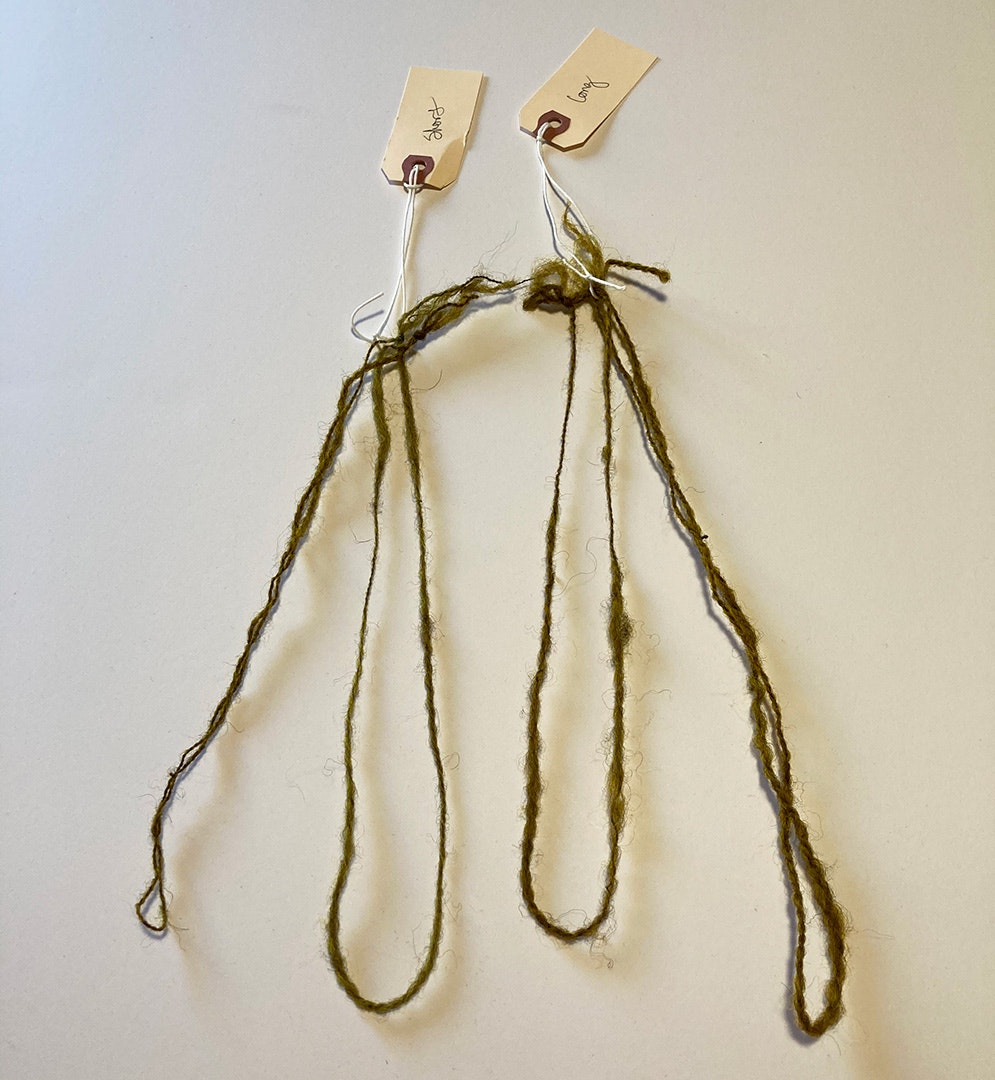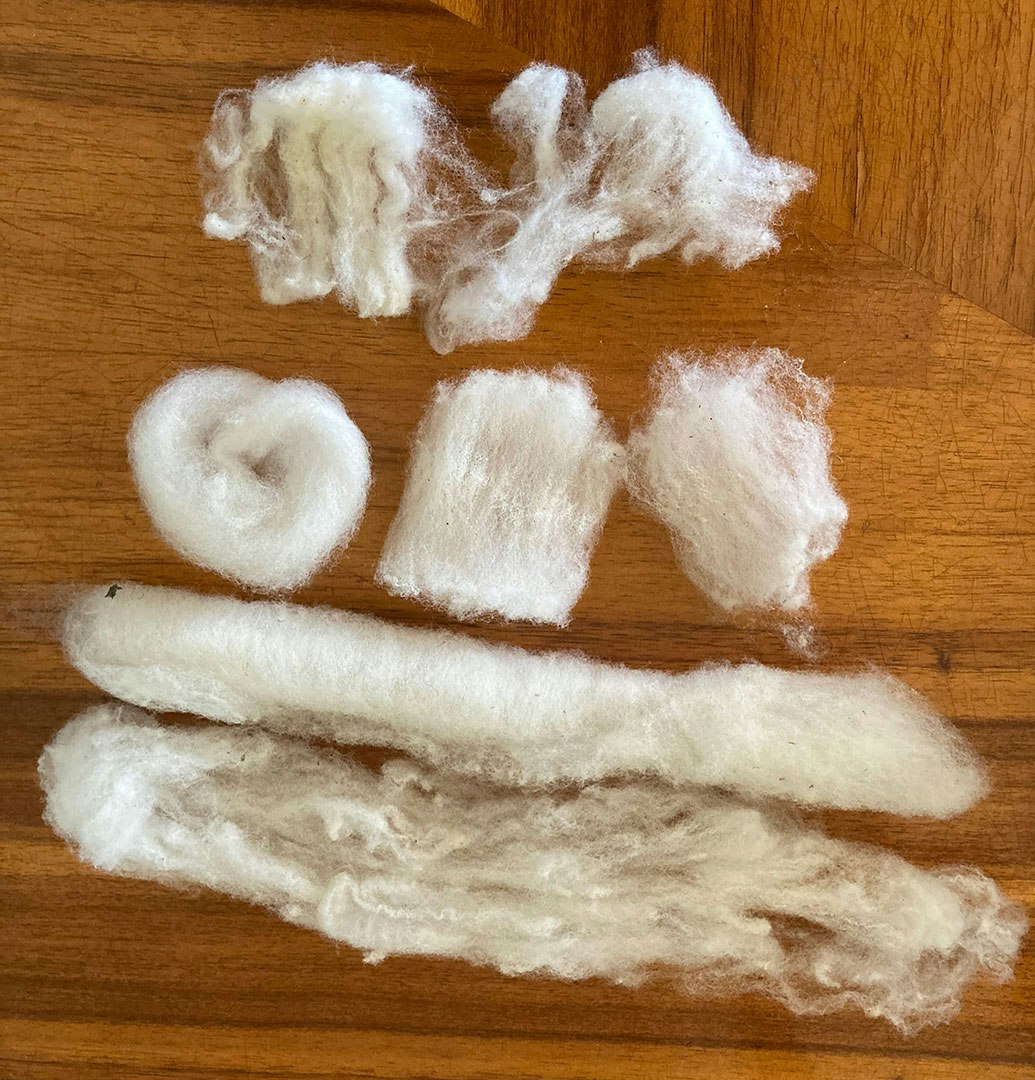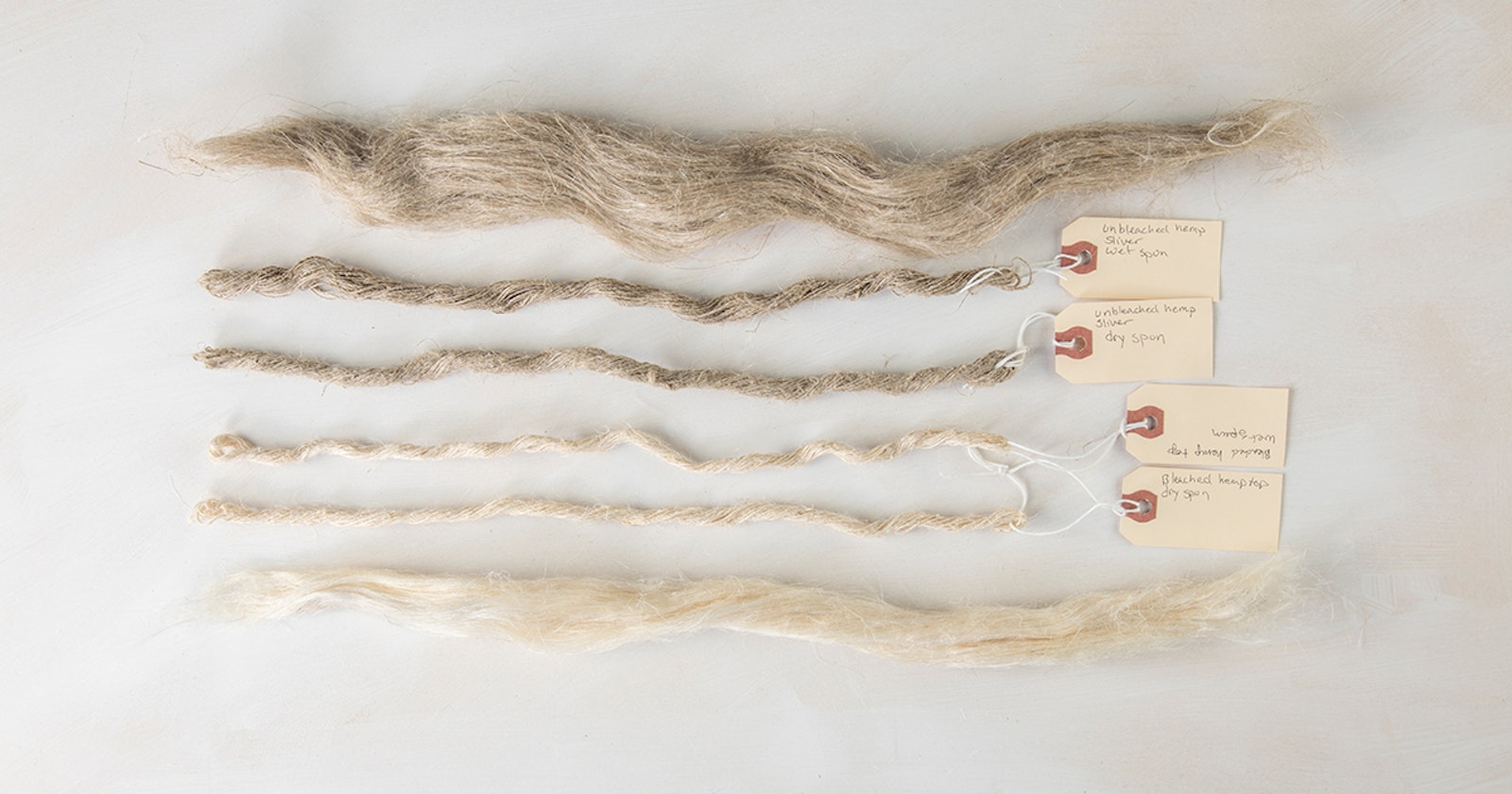I do not always sample, but when I am looking for more information about a fiber and making decisions about how I want to spin it, sampling is essential. Whether I am starting with a new-to-me fiber, spinning an unfamiliar preparation, opening a fresh fleece, or using fiber from a new supplier, sampling helps me to familiarize myself with the fiber and determine the best way to approach it. Sampling can be as simple as trying a couple of drafting methods on already prepared fiber. Or it can be more involved, such as trying different ways of preparing a fleece for spinning.
Try Several Drafting Methods
When I get a new-to-me fiber preparation, I will sacrifice a small amount of fiber to see how it spins up using different drafting methods to see what the resulting yarn is like. I spin only a yard or two of each drafting method and make a plyback sample. I usually begin with a short-forward, or backward, draw. Next, I give long draw a try, and sometimes, I’ll spin the fiber from the fold.

When sampling commercially prepared fiber, try several drafting methods and make plyback samples to evaluate the finished yarn. Labeling your samples helps keep things organized. Photo by Devin Helmen
Experiment with Fiber Preparation
I love spinning wool that I have prepared myself. Each fleece spins differently based on the breed, environment, health of the sheep, and skill of the shearer. Once I have washed the fleece, I will sample several different ways of preparing the fiber:
- Picking I select a few locks from the fleece and pull them open with my hands into a cloud and then attenuate and align them into a roving before spinning.
- Flicking Using a flick carder or a single handcard, I take a few locks of fiber and open each end of a lock by gently tapping them in an up-and-down motion while keeping the fibers aligned.
- Combing I usually comb about one comb full of fiber, making three passes, and then pull it into top without using a diz. I choose my combs to suit the fiber. All of my combs are two pitch, but some have closely set tines, which I use for finer wools, and some have widely set tines, which I use for long wools.
- Carding Another preparation that I sample is carding. I card one rolag with a pair of handcards. I have two sets of handcards: a standard set with 72 teeth per inch (tpi), which I use on most wool, and a fine pair with 120 tpi, which I use for finer wools, such as Cormo, Merino, and Romeldale. Fine wools require a pair of handcards with more teeth and gentle carding to prevent neps.
Not every fleece lends itself to being prepared using every method. For instance, if I have a long wool fleece with a staple length of more than 5 inches, I might choose to only prepare it by flicking and combing since the staple length lends itself best to those preparations. Once the fiber is prepared, I spin them using the drafting methods described above.

When sampling a new-to-you fleece, try several methods of fiber preparation. Photo by Devin Helmen
Finishing Samples
Finally, wet finishing the yarn will provide the most accurate information about the finished yarn. The twist will even out, and the yarn will bloom to its finished grist. A tip that I learned while taking a class from Kate Larson is to use the steam from a travel steamer to finish small samples of yarn. You’ll be able to see what the finished yarn looks like without having to fully wash the yarn and wait for it to dry.
I don’t have a travel steamer, but I do have an electric kettle for heating water and have adapted Kate’s method using a tool I already have on hand. To steam my sample, I move the yarn back and forth in the steam coming from the spout. I do this very carefully to avoid burning myself. The yarn changes right in front of my eyes, and I am able to fully evaluate the finished yarn quickly.
Once I have the information provided by sampling, I can then approach the fiber knowing what techniques produce the finished yarns I want—no guesswork. Sampling is worth the effort.
Devin Helmen has been immersed in fiber since learning to spin at age 8. They spin, knit, and weave in beautiful Minnesota. Devin enjoys writing and teaching about fiber arts and has a passion for spindles and everyday textiles. They blog, intermittently, at afewgreenfigs.blogspot.com.

